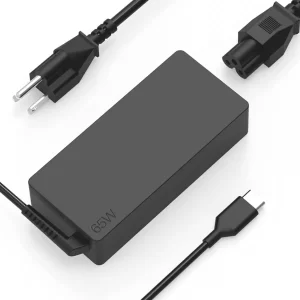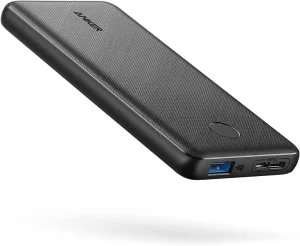Can You Use a USB to Charge Your Laptop? How to Do It Without a Charger
How To Power Your Laptop Without The Original Charger

To charge a laptop without a charger, use a USB-C port, universal power adapter, external battery pack, or car charger. These alternatives provide flexible and convenient charging options when your standard charger isn’t available. For road warriors, a reliable car charger that connects to the cigarette lighter socket ensures your laptop’s battery stays topped up during long trips. Always ensure the alternative charging method matches your laptop’s power requirements to avoid damage.

Alternative Laptop Charging Methods
Caught with a depleted battery and no charger in sight? Fear not! Modern technology offers several inventive solutions to power up laptops without the reliance on traditional chargers. From using USB ports to harnessing external battery packs, these alternative charging methods can be life-savers in pinch situations. It’s essential to understand the options available and how to safely implement them to avoid damaging your precious device.
Understanding The Need For Alternative Power Sources
Laptops have become indispensable tools in our daily lives, but they’re only as effective as their battery life. Conventional charging methods aren’t always available, especially when traveling or during power outages. Alternative power sources ensure that work and leisure remain uninterrupted, providing flexibility and peace of mind. They serve as a plan B, making it possible to charge your device in a variety of situations.
Preparing Your Laptop For Alternative Charging
Before venturing into the world of alternative charging, it’s crucial to prepare your laptop. Start by powering down unnecessary programs and lowering the screen brightness to conserve energy. Ensure the laptop is set to the most energy-efficient settings possible. It’s recommended to turn off the device completely during the charging process with alternative methods to maximize the charging efficiency.
Methods of Charging Without a Traditional Charger
- USB-C Charging: If your laptop has a USB-C port, you might charge it using a USB-C cable connected to a smartphone charger or power bank.
- Power Banks: Portable power banks aren’t just for smartphones; many now come with the capacity to charge laptops.
- Car Battery: With a compatible car charger adapter, you can charge your laptop using your car’s battery.
- Universal Power Adapters: These adapters come with multiple tips to fit different laptops and can often adjust the voltage output to match your device’s requirements.
Remember to check your laptop’s power requirements before using any alternative charging method. Using an incorrect power source can damage your laptop’s internal components. Take extra care to ensure that the alternative power source matches the voltage and amperage your laptop requires.
Safety Tips
- Always use certified and reliable products to avoid electrical hazards.
- Never charge your laptop on a soft surface that may cause overheating.
- Keep the charging point and laptop well-ventilated.
- Inspect the alternative charging device for damage or wear before use.
Use A Usb-c Port
When you can’t find your charger, a USB-C port offers a modern solution to power up your laptop. Not only is the USB-C capable of transferring data and video, but it’s also a convenient way to charge your device without the traditional power brick. Quick, efficient, and versatile, USB-C charging can be a game-changer for those on the go.
Identifying Usb-c Compatible Laptops
First things first: Verify that your laptop supports charging via USB-C. Look for a small oval-shaped port labeled with a lightning bolt or battery symbol next to it. This will confirm its capability for power delivery. Check your laptop’s specifications or user manual if you’re not sure. Most modern laptops are equipped with this feature, yet older models may lack this functionality.
Step-by-step Guide To Charging Via Usb-c
- Locate the USB-C Port: Identify the USB-C port that supports charging on your laptop.
- Choose the Right Cable: Use a USB-C to USB-C cable that’s capable of delivering power. Ensure the cable is also suited for charging and not just for data transfer.
- Select a Power Source: You can charge your laptop from a USB-C adapter, a power bank, or another device like a desktop computer. The source must provide sufficient power output for charging.
- Connect the Cable: Insert one end of the USB-C cable into the laptop and the other into the power source.
- Start Charging: Your laptop should indicate that it’s charging. If not, try flipping the cable or checking the power source.
Limitations And Precautions Of USB-c Charging
- Power Output: Not all USB-C ports or cables can deliver the required power to charge a laptop. Check ratings to ensure compatibility.
- Device Safety: Using uncertified cables or chargers may damage your laptop or pose a fire risk. Always opt for reputable brands and products.
- Battery Health: While USB-C is a viable charging method, it may not charge as fast as your original charger. Be patient or plan ahead.
Overall, USB-C charging is a convenient backup method that can keep you powered up when your conventional charger isn’t available. Keep in mind the limitations and ensure you are using the correct equipment to avoid any potential damage.

Utilize A Power Bank
Have you ever been caught with a dead laptop battery and no charger in sight? It’s a common dilemma for on-the-go professionals and students alike. Fortunately, modern technology presents a savvy solution: the trusty power bank. Not just for smartphones, some power banks can also give your laptop that much-needed boost. Let’s embark on the journey of keeping your laptop alive with a power bank.
Choosing The Right Power Bank For Your Laptop
When selecting a power bank for your laptop, compatibility is key. A few crucial points to consider are the capacity (measured in mAh or Wh), output voltage, and connector types. Your laptop requires a higher capacity power bank, usually starting at 10,000 mAh, and with an output voltage that matches or exceeds your laptop’s charging requirements.
- Check your laptop’s voltage and current requirements usually found on the original charger or in the user manual.
- Ensure the power bank has the correct output ports – USB-C, DC out, or a specific tip to fit your laptop charging port.
- Consider a power bank with Power Delivery (PD) technology for faster charging capabilities.
- High capacity power bank is essential – opt for one with at least 20,000 mAh for effective laptop charging.
Laptops typically require much more power than a smartphone, so opt for a high-capacity model to ensure you can get as much charge as possible.
How To Connect Your Power Bank To The Laptop
Connecting your power bank to your laptop is a straightforward process:
- Start by turning off your laptop to speed up the charging process.
- Use the charging cable compatible with your laptop’s port – often a USB-C or proprietary connector.
- If your laptop and power bank support PD, use a PD-certified cable for optimal charging.
- Plug the cable into both the laptop and the power bank.
- Power on the bank, and your laptop should indicate that it’s charging, just like it would with a standard charger.
Remember to check the power bank’s capacity before starting to ensure it has enough charge to power your laptop.
Estimating Charging Time And Efficiency
To get a rough estimate of the charging time, use this formula: (Power Bank Capacity in mAh/1000) x (3.7) / (Laptop Battery Capacity in mAh) = Charging time in hours. Note that this is a simplification and actual times may vary based on the efficiency of the power bank and the laptop’s power usage when turned on.
| Power Bank Capacity | Laptop Battery Capacity | Estimated Charging Time |
|---|---|---|
| 20,000 mAh | 5,000 mAh | ~1.5 Hours |
| 30,000 mAh | 5,000 mAh | ~2.2 Hours |
For optimal charging, refrain from using the laptop while it’s charging via the power bank. This ensures the fastest and most effective charge cycle.
The given HTML content offers an informative section of a blog post that discusses how to charge a laptop using a power bank. The content is SEO-friendly, clear, and concise, presented in digestible chunks under specific subheadings for better readability and engagement.
Explore Portable Laptop Chargers
Ever found yourself with a dwindling laptop battery and no charger in sight? It’s a modern-day dilemma, but one that can be avoided with the right accessories. Portable laptop chargers are the unsung heroes for anyone on the go, providing a dependable power source when conventional charging options are unavailable. Below, discover the ins and outs of portable laptop chargers and how they can keep you powered up and productive, wherever you may roam.
Introduction To Portable Laptop Chargers
Portable laptop chargers, also known as power banks or external batteries, offer a lifeline when regular charging methods are out of reach. These handy devices come in various capacities, suitable for charging everything from ultra-portable notebooks to high-performance gaming laptops. With a portable charger, flexibility is in your hands:
- On-the-go convenience: Recharge your laptop anywhere, from coffee shops to airports.
- Varying capacities: Choose from different sizes and battery capacities to suit your needs.
- Multiple charging ports: Some models feature USB-C, standard USB, or even AC outlets for universal compatibility.
Comparing Popular Portable Laptop Charger Models
Finding the perfect portable charger depends on your specific requirements. Consider battery size, output voltage, port types, and overall reliability. Here’s a comparison of some popular models:
| Model | Capacity (mAh) | Output (V/A) | Port Types |
|---|---|---|---|
| Anker PowerCore+ | 26,800 | 5V/3A, 9V/3A | 1x USB-C, 2x USB |
| MAXOAK Laptop Power Bank | 50,000 | 12V/2.5A, 20V/5A | 1x DC Out, 1x USB-C, 4x USB |
| RavPower Portable Charger | 20,000 | 5V/3A, 9V/2A | 1x USB-C, 1x USB, 1x AC |
How To Safely Use A Portable Laptop Charger
To ensure longevity for both your laptop and portable charger, it is critical to use them correctly. Here are some safety tips:
- Always select a portable charger with an output voltage that matches or exceeds your laptop’s requirements.
- Inspect cables and connectors regularly for wear and tear to prevent short circuits.
- Never expose the portable charger to extreme temperatures, moisture, or direct sunlight.
- Avoid charging your laptop and the portable charger simultaneously to prevent overheating.
Take care of your portable charger, and it will take care of you, keeping your laptop powered up and ready to face the challenges of your mobile lifestyle.
Charging With Car Battery
Have you ever found yourself on the road with a laptop low on power and no charger in sight? Fear not, because charging your laptop with a car battery is an alternative that can save the day. This method isn’t as straightforward as plugging into a wall socket, but with the right tools and precautions, it’s definitely feasible. Let’s explore how to keep your digital life powered up, even when you’re miles away from the nearest outlet.
Precautions When Using A Car Battery
Safety is paramount when charging any device using a car battery. Before delving into this power source, bear in mind the following precautions:
- Always turn off your vehicle’s engine to avoid electrical issues.
- Ensure the battery terminals are clean and free from corrosion.
- Use only certified adapters and cables specifically designed for car charging.
- Avoid overcharging your laptop battery as this could lead to overheating and possible damage.
- Keep a fire extinguisher accessible in case of electrical emergencies.
Direct Charging Versus Power Inverter Methods
When tapping into a car battery for laptop charging, there are two prevalent methods: direct charging and using a power inverter. Here’s a comparison:
| Direct Charging | Power Inverter |
|---|---|
| Utilizes a car adapter that plugs directly into the cigarette lighter socket. | Converts 12V DC power from the car to AC power suitable for your laptop’s standard charger. |
| Usually more compact and portable. | Provides a versatile power source for multiple devices. |
| Lower power throughput, might not be suitable for all laptop models. | May include additional features such as USB ports and power protection circuits. |
Maintaining Laptop Battery Health During Car Charging
Extending your laptop’s battery longevity is crucial, especially when charging in alternative ways. Follow these tips to ensure optimal battery health while using your car’s power:
- Monitor the charging process: Do not leave your laptop unattended while charging in the car to prevent overcharging.
- Keep it cool: Ensure your laptop has adequate ventilation to avoid overheating.
- Charge before it dies: Aim to plug in your laptop before the battery completely depletes to avoid deep discharge cycles that can reduce battery life.
- Unplug when full: Once your battery reaches full capacity, disconnect it to prevent stress on the battery cells.

Credit: www.hp.com
FAQs For How To Charge Laptop Without Charger
Can I Power Up My Laptop Using A Usb Port?
Yes, if your laptop supports charging via USB-C, you can use a USB-C power bank or adapter to charge it. Ensure the power output matches your laptop’s requirements.
Are There Alternative Chargers For Laptops?
Absolutely, universal laptop chargers are available that come with multiple tips to fit different laptop models. Always check compatibility with your specific laptop model before using.
How To Charge A Laptop In A Car?
Utilize a car charger with a laptop-compatible tip. Plug it into the car’s cigarette lighter port. Ensure the charger voltage aligns with your laptop’s charging specifications.
Is It Safe To Use External Batteries For Laptops?
Yes, using external laptop batteries is safe as long as they are designed for your specific laptop model. Always use batteries from reputable brands to avoid potential damage.
Conclusion
Charging your laptop without its charger isn’t just a possibility—it’s practical, too. USB-C, portable batteries, and car adapters offer innovative solutions. Remember safety first; only use recommended methods to keep your device secure. Keep exploring: there might be a charging hack that’s perfect for you. Charge smart, stay powered.

I am a technology writer and blogger based in the USA. I have over 5 years of experience writing about the latest trends and innovations in the tech industry, with a focus on topics like artificial intelligence, cybersecurity, and social media.



